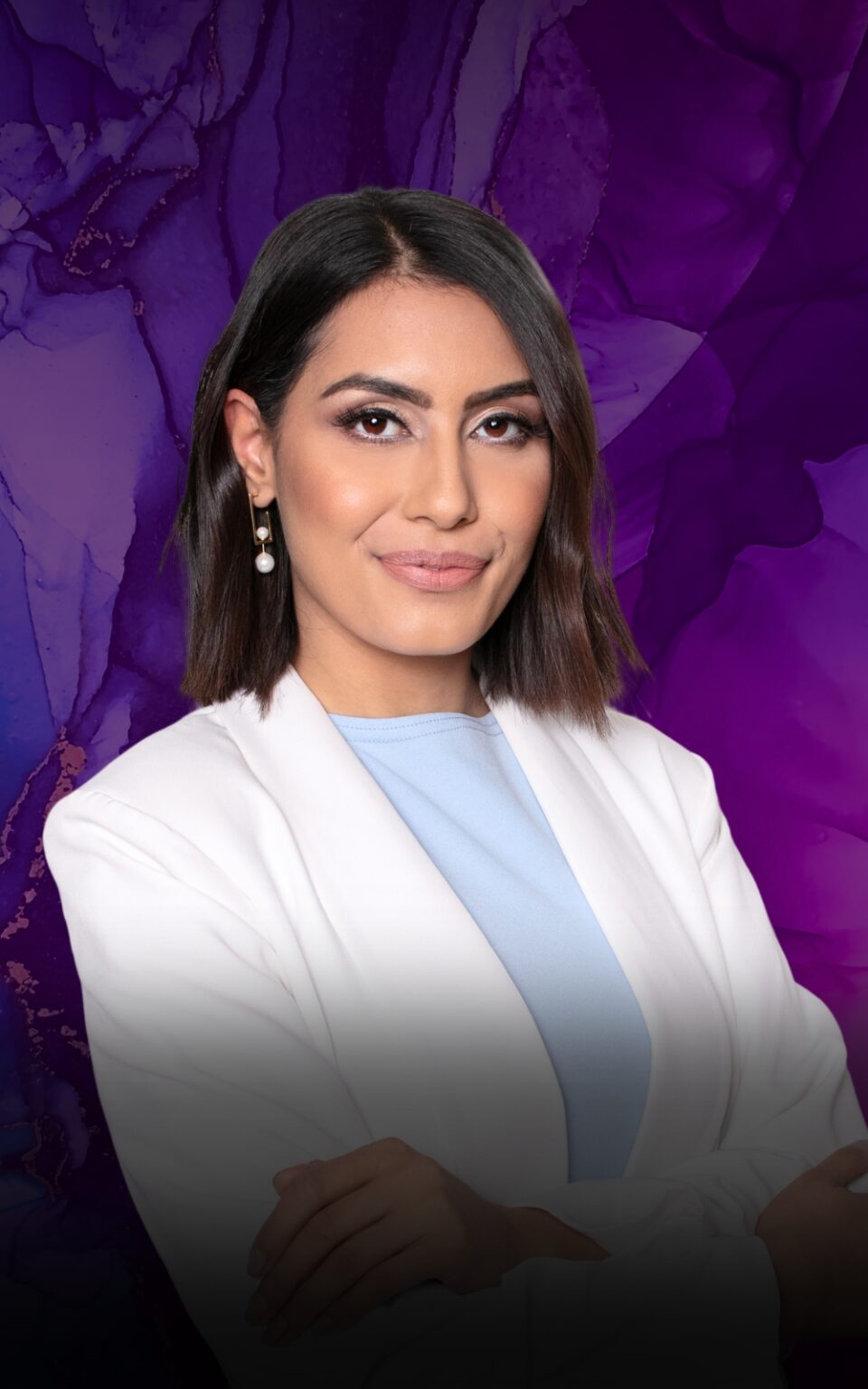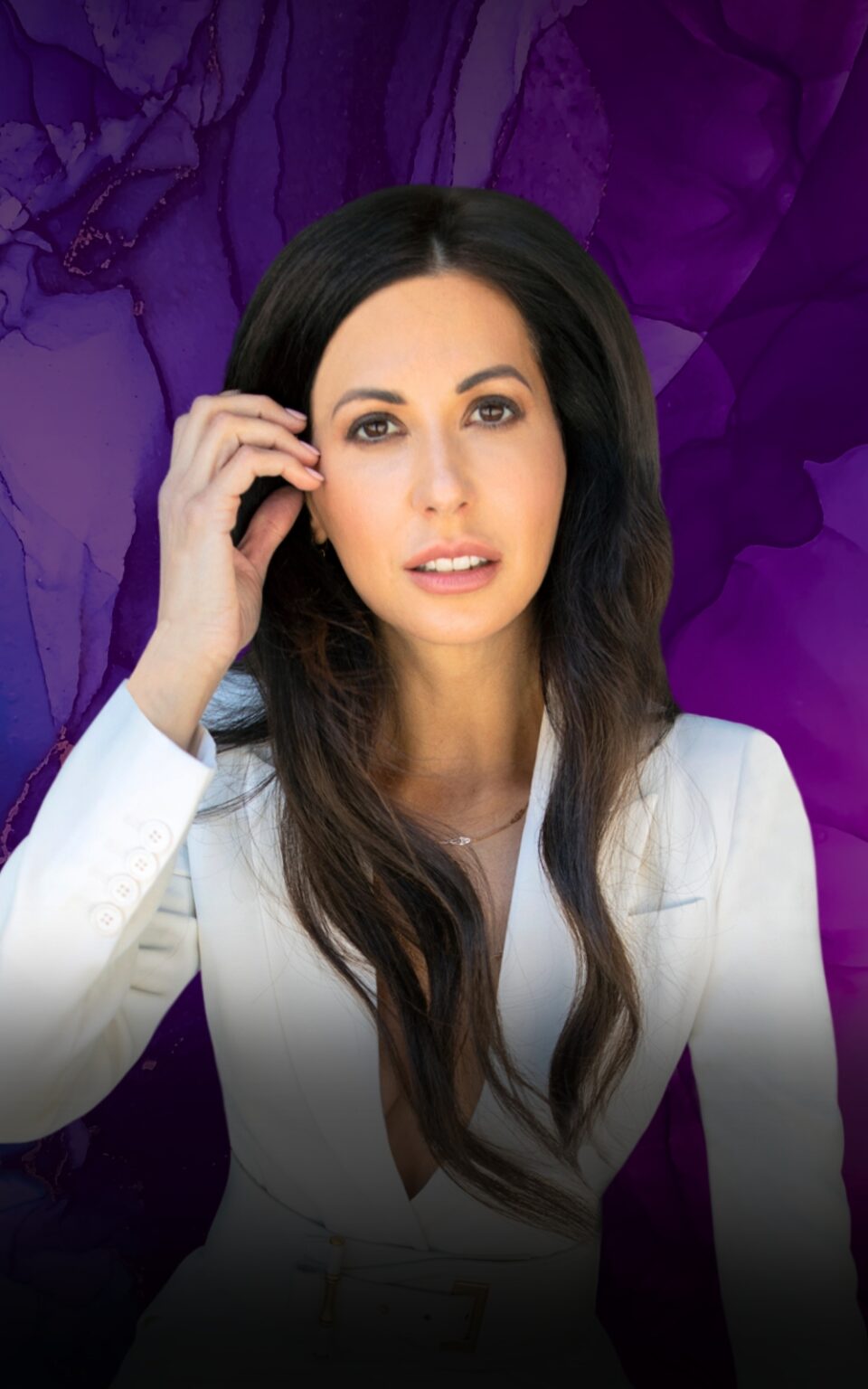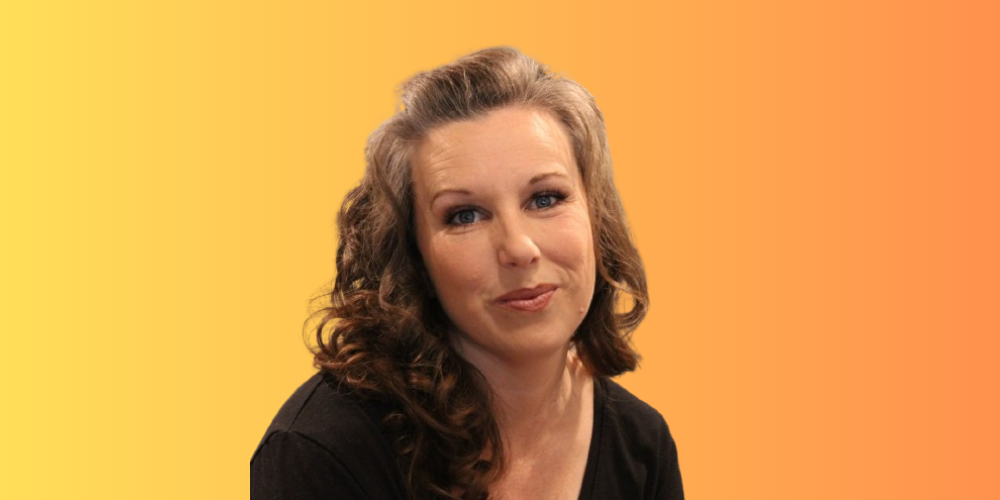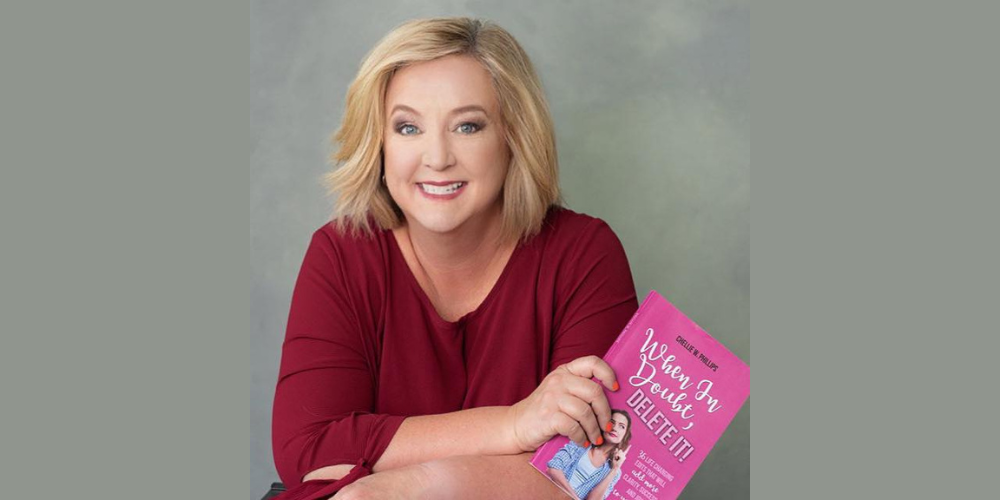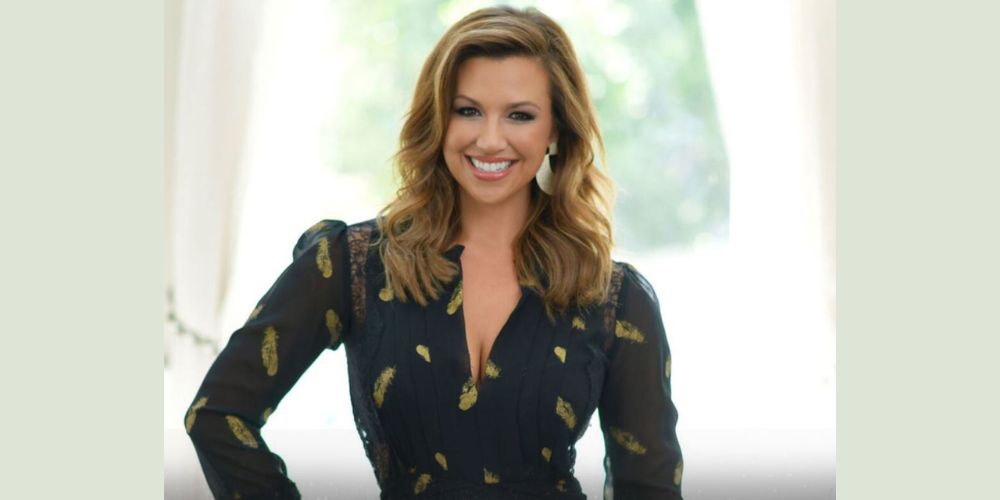Raj Girn: Hi, guys, thanks for tuning in to another exciting episode of the `Transform Your Confidence Show.` I’m a firm believer that content is still king because its ability to create powerful connections is key to always being relevant as a brand. However we connect and what tools we use is what determines the success of our business and also its failure. So getting the formula right, from branding to content strategy to dialing into a go-to marketing plan, are all important components to accomplish a brand loyalty and the acquisition of sales. And this is exactly what this week’s theme of Branding and Marketing is all about. My two-part series is entitled `The Power of Content Strategy to Brand and Market Your Business for Success.` My guest is one of Canada’s preeminent thought leaders in content strategy, Mohit Rajhans.
Here is Part One of our conversation:
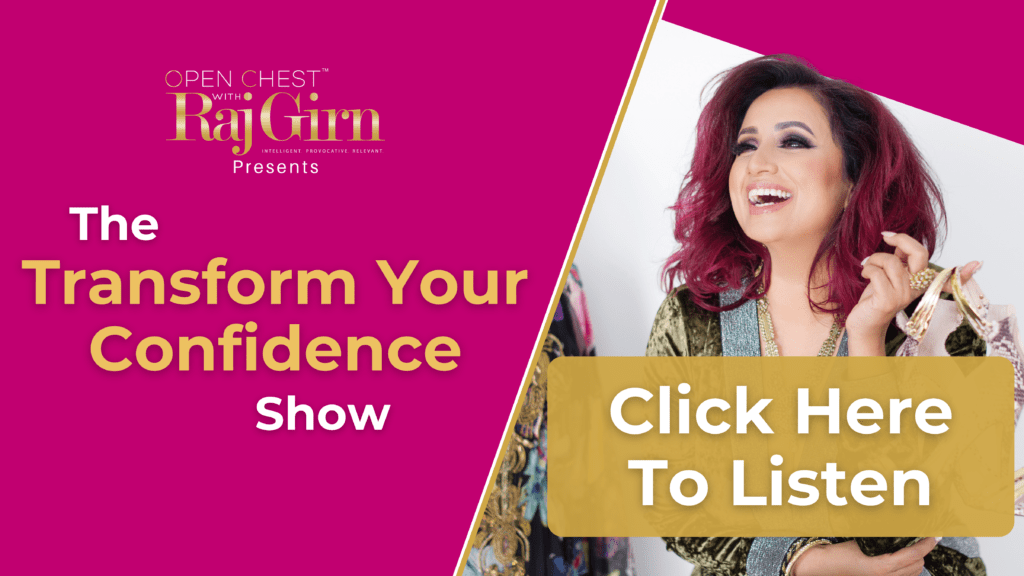
Here’s a bit about Mohit before I bring him on. He’s a seasoned media professional who has produced, interviewed and hosted big name celebrities and worked with major media companies like Rogers Communications and Cineplex Digital. His recent book, Rethinking Your Content, reached number one on Amazon.ca, and he has been recognized by the Real World Film Festival with the Trailblazer Award. He owns one of Canada’s longest running movie blogs MohitMovies.com and is launching an interview series about fatherhood this fall at www.dadspotting.com. Please welcome to part 1 of the show, Mohit Rajhans.
Raj Girn: Hey, Mohit, thank you so much for joining me also on this platform. You have been on my journey ever since the get-go in all the different brands that I’ve been involved in, in all the different iterations of those brands. And I’m just so happy that I can bring you in on this particular platform, because this podcast truly it’s created to service and help people to kind of bridge that gap between school and academia and wanting to be competitive and confident in the work arena, which, as you and I know, is constantly changing at a far more rapid speed than it ever was in our parents’ generation or generations before. Because it’s predicated on a lot of disruption that’s taking place that technology is really moving us into a lot of directions that a lot of kind of the the academic institutions are very far behind in making those changes happen by default of the fact that they’re institutions.
So we know even from a multinational corporate perspective, the bigger you are, the longer it takes for you to implement change because there’s so much red tape and layers of it that you’ve got to go through. So that the most agile of us or those people who are able to affect change quickly. So with that said, I’m excited to have you on this particular episode, and I’ve been waiting to do this one because I wanted to do it with you. Folks, I’ve already kind of explained to you why is someone that I think is a really important thought leader in this space before we brought him on. So I’m going to just jump right into it. If you’re cool with that Mohit.
Mohit: Let’s rock.
“I’m a firm believer that content is still king because its ability to create powerful connections is key to always being relevant as a brand.” ~Raj Girn
Let’s do it. Just to kind of preface getting into this, because I want to kind of break it down, because a lot of people think that content, it’s marriage to branding and its ability to kind of convert through marketing and get more clients and engage more people and to get kind of brand loyalty, is an easy thing. People think you just put stuff out there and somehow it just all magically happens. But there is major strategy. There’s data analytics. There’s all kinds of thought that goes behind what that formula looks like, from branding to content to marketing to acquisition. With that said, we’re going to focus today on the content piece and how that kind of fits into the wheelhouse of all of this. Content is still king because it’s a connector and whenever something is used to connect, it will always have relevance, no matter what technology is being brought to the table. This is my belief and is something that I feel that will never change so long as people understand how to use it.
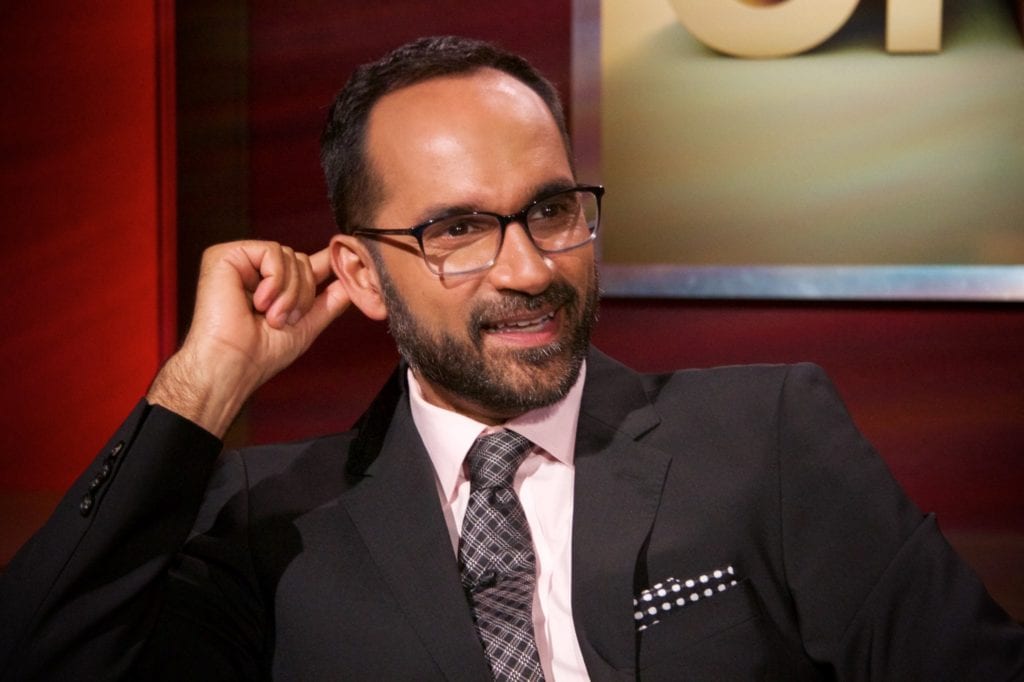
Credit: FB@shortfilmfaceoff
So, however we connect and what tools we use is what determines the success of the acquisition and also of its failure is basically the point that I’m making. And this is why I’m super happy to have you come on and share your insights on what people should be thinking about and looking at doing that is most effective today. Because what’s effective today may not be effective tomorrow. I also want them to know how to accomplish good content strategy, even from a benchmark’s perspective, that even as technology keeps disrupting and changing the way that we need to look at it and how we can use it. Just like everything in life, there’s always a few benchmarks that never really change. With that said, here’s my first question to you, my darling. I kind of want to start at the beginning of where I feel the beginning needs to be. And it’s assuming that not everyone watching, listening or reading this understands what content actually is. So let’s start there, Mohit. Without going into how to use it and what the advantages or disadvantages are of content, can you just simply — in your own kind of understanding of it, of being a content person for the last over two decades — can you tell everyone what content is? Like a definition or an understanding from a perspective that they would understand?
I always refer to content as being messaging and it’s messaging in multiple forms on various platforms. And it’s up to you on how you decide that… So content for me, for example, has three purposes. You’re either connecting with it, you’re doing it for the culture or there’s a commerce element to it. The connection is the one-on-one, the messaging we do on a daily basis, things that we want to do. And we said memes to each other. The culture has a lot to do with how we grow up and we start to understand that whatever values that we’re interested in, we might make a song, we might write a blog post, we might be involved in a in a place where we know we’re creating a voice for an underprivileged group. That’s where the culture part of it should never take you away from creating content. And then there’s the commerce part. Is there an exact function for what you’re creating and how it’s going to acquire an audience or create a sale? And those three things boil down to what is the message of what you’re creating when it comes to content?
“Content for me has three purposes. You’re either connecting with it, you’re doing it for the culture or there’s a commerce element to it.” ~Mohit Rajhans
Right. So let’s look at that piece then a little bit. Based on what you just said, Mohit, what’s the difference between editorial content and marketing content? And the reason why I’m making it that black and white is just because there are so many different variations of both of those and there’s so much kind of cross pollination that in order to kind of decipher it on some level so we can benchmark it, I’m putting it into two buckets. So editorial content versus marketing content. What sensually is the difference between the two if there is one?
So the purist answer is that editorial you never pay for. And so editorial is a natural relationship in which you go through a gatekeeper to be able to tell a story on another medium. So your newspapers, your televisions, your radios, etc. So if I want to go and pitch the fact that Mohit is phenomenal to a radio station, that gatekeeper will have to decipher that a) Am I phenomenal? b) Is there a story here? and c) Does your audience need to see it? But I could pay and do the Mohit marketing with that content and say, “I want to be on your network, put the Mohit show marketing content on your thing, and then we work on how about who is best positioned?” Both have viability, right? I mean, if I want to market on the best show on a TV station then I’m going to work on my advertising content to be the prime hook there. But if I’m going to be interviewed on a TV show, I’m going to need to work on what my messaging is in that situation. And it’s entirely different.
The one thing that I think people need to decipher, though, is that the editorial gatekeepers, when it comes down to content, really have different agendas based on every different type of show. So gone are the days where you can send out a press release and hope that a bunch of media will all of a sudden be interested in it because everybody has their own separate type of audience that they cater to. And so what they’ve learned from the digital realm is that the data that we see in the digital realm from a content perspective is starting to work within the traditional editorial sense as well. Now, don’t get me wrong, there’s digital editorial as well. There’s various blogs, et cetera, that consider themselves digital editorial and you pitch them. They are the gatekeepers. They have the mass media, but they’re also not… The difference with that is that you can throw a sponsored article into an editorial feed and sometimes it’s a little confusing. Right? And so they don’t have necessarily the same… You’ll very rarely see a TV commercial on TV without realizing that that’s a commercial. Whereas with digital, sometimes it’s a little bit more… they try to make a little more seamless and call it advertorials.
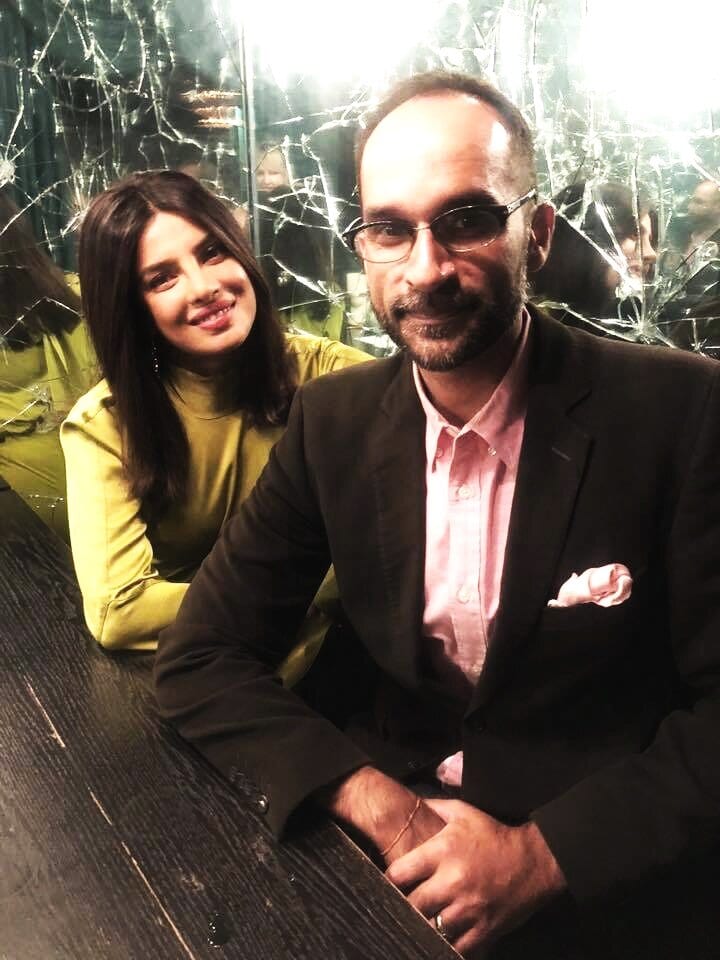
Credit: © Think Start Inc.
And that’s the thing, right? That’s the whole kind of native advertising or native marketing, which has made branding so huge today, where branding is so important because, how do we say the same thing in a different manner so it goes from being obviously sales-y to being authentically storytelling? And I think that that line between church and state — especially since that couple of decades you and I have been in the game has drastically blurred — right? Especially because of the digital online platform game. People don’t really know if this story that they’re being fed is one that’s been written by a journalist, which is editorial, versus whether it’s been written for pay. And really what is the difference? Or partnerships. These are all things that didn’t exist right until digital came along. Or if it did exist, they were more behind the scenes and they were packaged as either editorial or marketing.
If you don’t mind me saying, I think the one thing that people often forget is that advertising runs whatever media we’re talking about. And so what we’re forgetting sometimes is that, as high and mighty the number one newscast might be in the country or the number one paper, they still are paper thin if there’s no advertising. So the balance that we have to consider now and any content strategy that requires both a pay, what we refer to as a paid and earned strategy, is that we have to consider that the platforms individually need to be told what the value is now. Not sold what the value is. I call up, I speak to producers all the time about doing segments and stuff. And when we have those conversations, I have to tell them what the value is now, not sell them on it. And so it’s important to understand that because they in turn go to another person and say, this is a great way for us to open up this for this audience.
And then that person ends up saying, yes. With marketing, though, I will tell you, let’s just say with traditional you tried to get a story on for three months on a product that you’re selling juice. And they wouldn’t do the morning show, etc. If you turn that around and use your ad dollars, you will get a segment on that show. You know what I mean? And so that’s just proof that it’s not the same anymore. It’s not the same anymore. The profit has to be . . . And for many of the big companies that we’re referring to, the media side is the loss leader. It’s not even the one that actually makes the money. So one of the pieces of advice, if you don’t mind me throwing out there, is don’t live and die by what’s happening in traditional media world, because it’s not currently designed to facilitate the vast amount of content that is available out there on multiple platforms. It’s just not there right now. And people are spending way too much money on a strategy that’s supposed to be complementary when they could use that time and effort and just find their audience by focusing on one or two major things.
“People are spending way too much money on a strategy that’s supposed to be complementary when they could use that time and effort and just find their audience by focusing on one or two major things.” ~Mohit Rajhans
That’s such an important take away. So how would you suggest to people out there who want to put a product out there, how would you suggest to them to kind of go to market from an advertising versus a marketing content perspective? So they could keep it in the wheelhouse of content, right? What would you say to them would be the best way to do it? Because a lot of people have a thing about, like a hang up about, well, I don’t want to pay for my segment or I don’t want to pay for my article. But in essence, you kind of sort of are. Either you’re paying them directly or you’re paying a PR company to go get it for you that has the relationships with them. Either way, you’re paying someone, whether it’s direct or indirect. How do we remove that kind of church and state for people for want of a better way?
Here’s a bold statement that you should tell everybody, but organic is dead, okay? Google is not a search engine. Google is a ranking engine. Google ranks are articles. It doesn’t search for you. The priority and finding you in Google ends up being seven ads before you’re being found. If a big media company like that isn’t an indication that organic is that then you’re ignoring the obvious signs. All of these social media platforms are media platforms on social. They have advertising within them. They’ve got walled gardens, as we call them, where they want you to stay within their advertising platforms. Facebook owns Instagram, WhatsApp and something else, I’m sure. And they want you as the creator.
They want you as the creator, you as the brand person, you as the marketer. They want you to spend your ad dollars in these places and they’re creating those tools so that you become a rock star. So you feel like you’re doing your best creative on there to show people what you’re doing, your marketing, your podcast. They will make you feel like that connection is possible by two reasons. One, they’re showing you the demographics that are available for the content with a clear, concise, this is how you target. And two, they’re walking you through how easy it is to create an ad. Do you know how difficult it used to be? You know how difficult it used to be a decade ago to get a graphic designer to create an ad for you. It was a requisite. It was money. It was iterations. Now, these social media platforms are getting to a point where Raj just feels like she’s going to sell a brand new fan or mask. You know, you can get that designed, done, put on Facebook, ready for sale, within minutes.
Yes, absolutely.
So I think we have to remember we’re we’re in a place now where it’s… Anyway, sorry, I won’t keep going.
This is this is actually really wonderful because it leads to my next question. Which is, both editorial and marketing content is used today to solicit different touch points with the consumer. You just kind of finish prefacing that for our audience. My question to you is, where would you suggest brands use editorial content, knowing that you’ve just said what you’ve said, versus marketing content when communicating with the consumer? Because as far as you’re public facing the consumer sees this is editorial, this is marketing, regardless of what you and I know is happening behind the scenes.
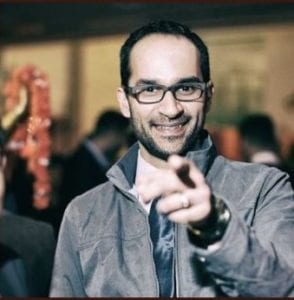
Right. I think the two biggest factors, any communications plan should consider with reference to how editorial can work is a) How are you… Well, first of all, I think one gateway that is completely underutilized with reference to how corporations and brands can use it is through corporate social responsibility. I don’t think companies do enough right now to really explain to people how much they’re involved in communities, how much they’re been spending — thousands of dollars in various causes, et cetera. And I think it’s very important because we forget this is an exploitation. If I go and I show that my corporation was involved in Run for the Cure or raising of this, etc., they get the benefit, the company gets the benefit, plus we get the benefit from our altruistic. And I think those editorial stories end up pushing way more value than me stopping and saying come and buy a bunch of printers that I’m trying to sell through my company. So that’s one thing.
The second thing I don’t think that companies are doing enough right now is they’re not telling the stories about their employees. We’re seeing a lot of leadership, great celebrations. And unfortunately, because of the diversity push, it became a little bit too much too late again. So then you started to see companies starting to really celebrate employees to fill the gap. And that’s not what we want to see. I think there’s great marketing potential in your brand by going internally a little bit and telling some of those stories from an editorial standpoint. And I’ll give you one last thing. There are many companies right now, the pride themselves on the innovation that their employees bring to the table. But why is it that we very rarely see that celebration on LinkedIn? We rarely see that story sort of get played out as a result of how about this one employee brought this one idea to something that became something. That’s where I think the content should go when it comes to editorial.
You can try on the innovation side, which a lot of companies do. And I see that. Where you think that your innovative product has a story to tell that’s going to change. But that’s what every press release is, right? Every press release says, “Hey, we’re game changing, we’re going to offer this and we’re going to make it this way. That’s why you should tell this story.” But I think we’re also we’re getting into a world now where, you know, this next generation isn’t necessarily going to care as much about whether this is written by a film critic or written by somebody who’s talking about the film because they were paid for it. So I think we’re going to see a little bit less of concern.
The concerns that you and I have, I think, are a little bit rooted in the fact that relationship building was done based on principles and relationship building was based on understanding. But let’s be honest, Raj, a lot of the people that were leaders in in the game that we’re talking about, which is media, are behind a lot of the problems that we see today. If you don’t have the foresight to continue to understand how that growth happens, then you’re not going to be able to sustain the business. Why is it that the media leaders in this country have been able to completely, like, watch the ships sail past them and still maintain their position? It doesn’t make sense, right? So I think that the consumers that we’re raising right now among us are starting to notice a little bit less about what should be here and what should be here and more so what do I want? What’s my personal? What are you writing for me?
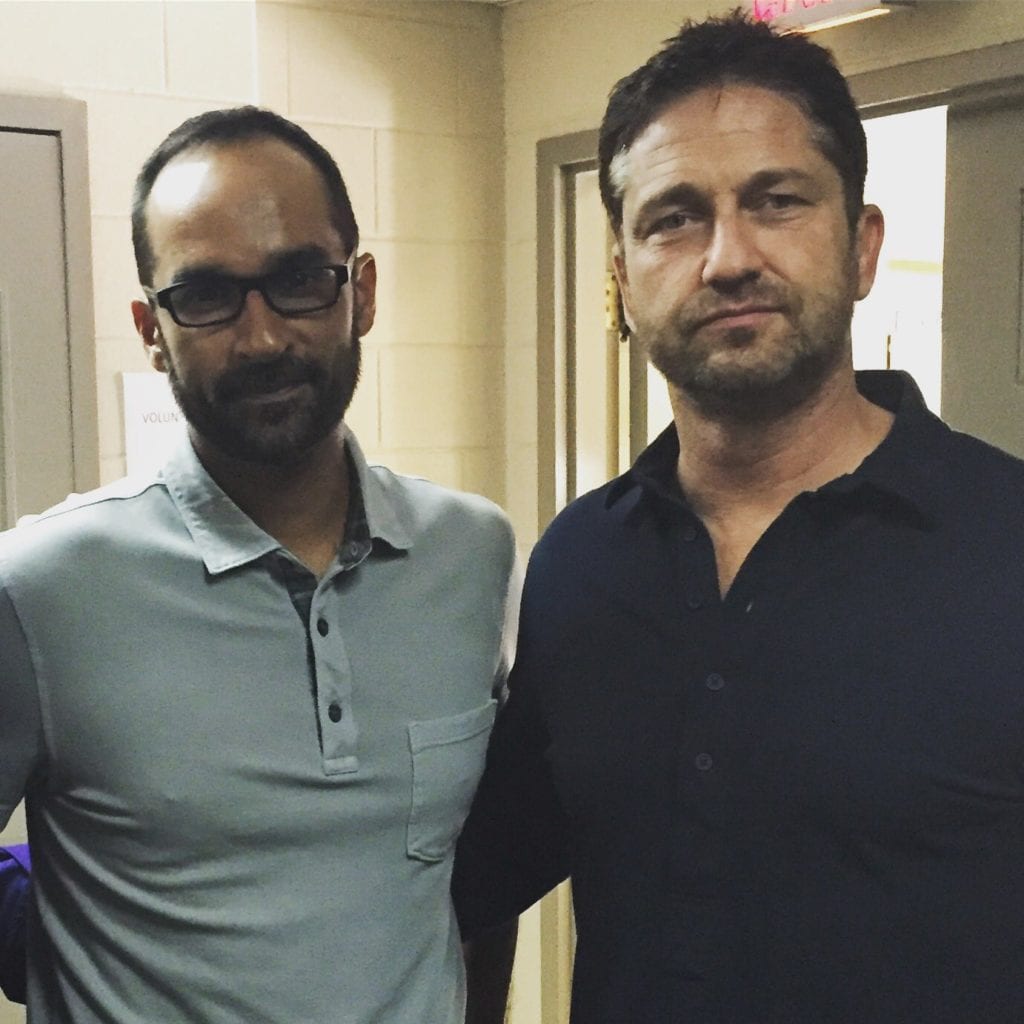
Credit: TW@mohitsmovies
So it’s interesting that you’re saying that because I had this conversation actually with somebody else regarding branding. And I want to kind of bring it back around to that Mohit. And let me share a little bit about that conversation, because I think that you’ll find it interesting. I basically spoke to them and I said, listen, we are living in a workforce environment today where, even though a lot of it is still top down — which is kind of the infrastructure that was created 150 years ago by the Industrial Revolution — even though that is a lot of what the corporate structure is. And is what you’re talking about with the big media houses, they’re still top down. And LinkedIn is still top down. But but the thing is, is that the workforce today, at least in North America, 70 per cent of it is either millennial, Zoomer and that generation. So if you look at that, you look at a parent’s generation, who have their jobs for 30 years. You look at our generation where we have multiple different jobs. And we’ve done them for different periods of time.
And then you look at this generation, which is more your gig economy, where literally most of them are kind of flying around in between different companies. Because the importance to them isn’t the company, as much as it is their value, the value that they feel they need to get out of that company. So you and I were in that kind of in between the two generations of our parents and this generation. Where we did feel the importance of the powers that be. But we also kind of started to kind of kick up a bit and say, listen, I’ve got something to say here, but we still didn’t have the power to do that. Now, you look at this generation, you look at the millennials, you look at the Zoomer generation. They completely and utterly do not follow the same value system. They don’t care that you’re important. What they care is what are they getting out of you, which is why there’s a there’s a huge kind of disconnect between the multigenerational workforce that is out there. You know there’s you and me from Gen X. You’re a Gen Xer right?
Okay, so you and me in the Gen X world, there’s the millennials and then we’re sitting with the Zoomers. All three of us and some baby boomers. All of these generations today are working together who all have a different value system that they operate under and that they work under than it ever was in yours and my generation and all preceding generations. I feel that has a lot to do with why branding has become so incredibly important. And you can’t be successful today if you don’t dial in what your brand vision, mission, value system is and the storytelling component of that, because all of a sudden now you’re dealing with multiple values in the workforce. So what’s your comment on that? Because this is a lot more of a complicated solution, I believe, than the past. I don’t think we’ve ever faced this that we’re faced today with multiple generations, with different value systems that are in the workforce. Talk to me a bit.
I think that you bring up a really great point. But what’s surprising to me is that how are we still missing the boat on how we market to people when we’re all working? So let’s just say hypothetically, diversity worked. And that what you just referred to was that in a perfect world scenario, there were four or five generations in a boardroom. And we’re all talking about how to make sure that this is compliant, that this is on brand, that this is not tone deaf, etc. We’re still making mistakes. And so as much as I’d like to think that a perfect world exists where all different generations can work together to come up with solutions that future generations can benefit from, I do believe that the biggest gaps that I’m noticing still has to do with leadership. And while we’re all still well, we might all be there, we’re not letting we’re not letting the right people up. We’re not utilizing the right amount of resources. I’ve been to meetings at agencies, I’ve been to meetings in newsrooms, I’ve coached people. I’ve done media training for people.
“As much as I’d like to think that a perfect world exists where all different generations can work together to come up with solutions that future generations can benefit from, I do believe that the biggest gaps that I’m noticing still have to do with leadership.” ~Mohit Rajhans
And I can see this reflection stuff is not has not happened yet. It’s not. And don’t get me wrong, recently I called it Diversity 2.0 because I think you and I were around for Diversity 1.0. We were the ones that they originally were just like, “oh, you you kind of look like you might be able to fit the part.” We’re just like, “yeah, OK, well, let’s go.” But you know what I’m saying is Diversity 2.0 hasn’t really find its way yet. But going back to the marketing side, what I think is ironic is that… I refer often to meeting your audience there. Right? So if all of our audience is in our workplace now and we’re still not finding the right way to hit the right tones, manage our messages, get to the right people, then why are we here? Like, why are we all working together? If we can’t bring that value, the human value of what we’re trying to do to this company, this brand or whatever we’re doing, I don’t really see the point of what we’re what we’re doing. But I will say that the opportunity is fantastic.
Absolutely. So I think that, not to belabor the point, but I feel that it has a lot to do with the fact that this is where the missing gap is. It’s a reason why the knowledge industry — coaching, consulting, mentorship — is growing so rapidly. Because there is this huge gap between what we’re taught and thrown into the workforce with and what’s actually happening in the workforce. And what isn’t is not working. There’s a huge gap there.
One quick point to that, because you did mention something about the disconnect with the ME generation versus the you know… the respect factor and all that stuff. It’s also the generation that’s not afraid to skill up. And I think that Gen X is really on the verge right now of making one big mistake, which is, “well, I got this. I know what I’m doing. I get it.” No, you need to be digitally literate for the next generation, regardless of what workforce you’re in. You need to be up on what exactly is happening and how people are connecting with each other. And you definitely need to understand how communication is changing. Because it doesn’t matter what industry you’re in. Especially for Gen Xers. I’m warning you. Don’t think that just because you’re savvy enough to have the latest iPhone, you really know what’s going on. You’re going to be raising kids in some cases and your business is going to be growing exponentially. Stay on top of it. As smart as you were to be the first people in your household to register for those emails and get your Google stuff ready and get your Facebook ready, keep that because it’s important for you to be a leader in whatever space you’re in.
Absolutely. And to actually open the door for dialog from all different generations, all walks of life.
Yeah be curious.
Yeah. Oh, my God. That’s the word. That is the magic word right there. And I think that that word is extremely important in business. So let me loop us back around again. Can you can you share, Mohit, any example where a brand used editorial content really well to convert audiences to their product or service? Where did it work?
Well, I think there’s two separate stories. Let me tell you. I’m going to go back to corporate social responsibility. So in my TV days, we would dedicate an entire morning sort of thing for Disney and Dreams take Flight. And what they would do is they would model a complete airplane. And they would take kids from Sick Kids and underprivileged areas, et cetera, for a day at Disney and fly them back. A wonderful experience. Every news organization covers it. It’s not a bought situation. Disney doesn’t pay for that. And it just becomes something that it’s not every newscast and that’s editorial that benefits everybody. It benefits the children’s charities that are involved. It benefits whatever airline is involved. It benefits, obviously, Disney because they get the highlights. That to me, is the type of stuff that brands are going to have to do a little bit more of in order to stand out in the crowd.
And is there anyone that you feel that is doing a real bad job of branding? Is there an example that kind of pops into your head of maybe a company or a brand that people know. Even if it’s historically speaking and not right now.
I mean, there’s definitely a lot of tone deaf stuff still happening. And I think we’re starting to see that even in the way multicultural agencies are being called to task over the way that they’ve decided to put it into a sausage maker, what language variations of things can be. You can see that with the way government contracts have been with messaging around the pandemic. There are a lot of companies that don’t know the difference between outreach and… Anyway, let’s not get into to that. But one of the things I did want to mention is that I find it really odd that we spend a lot of time marketing companies, spend a lot of . . . Sorry are we on the editorial question or the marketing? I forget now.
So we’re on the editorial question and then we’re going to go to flip over to marketing.
So the editorial that’s bad…. I’m not going to say one thing specifically, but I’m just going to mention that crisis communications ends up being the most difficult one to sort of try to get a hold of. And I think that there’s way too many people that are trying to live in a world where dealing with things from a crisis communication standpoint sounds like the best way to do it. It just seems to me like not the right approach. You want you want to tell your side of the story, use your social media channels to do it, do it from one place. Don’t try to get multiple stories about it because it will turn on you. People need the story. People don’t need you in that situation. You know what I mean? So I think that it’s important for people to be careful about how they address situations because negative editorial can come up from anything, especially if you’re trying to clean up something.
Absolutely. So just to kind of regroup on that before we go into the marketing side of things. When you’re looking at editorial content are there any benchmarks that you can share that, this is a good thing to do and this is not a good thing to do for people who really can’t wrap their head around how to incorporate content, content, strategy and business? When it’s editorial.
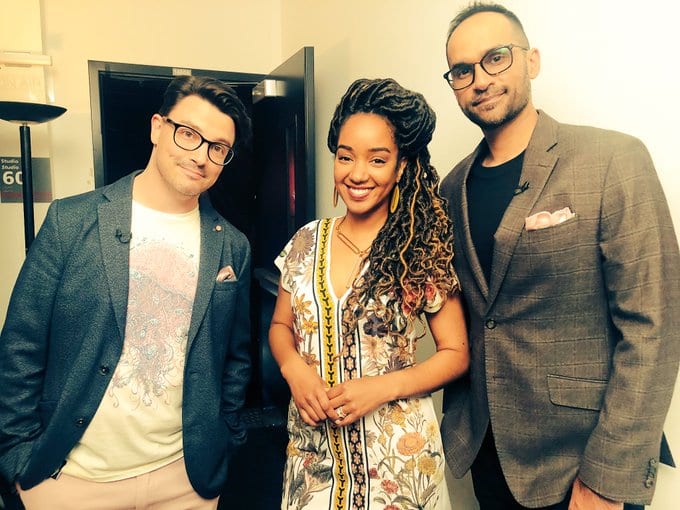
I think the bigger thing that people forget to do is that the world has changed. And so I’ll give you a prime example. I had been emailing a producer for the past three, not three years, but a producer from three years ago in and an exchange. And I couldn’t figure out why he wasn’t getting back to me. And I realized he had moved on. Shows have been canceled. Papers are done. Email lists have been updated. New energies have formed. New shows have formed. New podcasts have formed. I think one of the things that we’re missing right now is that we tend to think we know most of what we need to know. And those relationships aren’t being built with new people and that we find that you need to make sure is that if you know where your audience, customer base or the person you’re trying to attract, the groups that you’re trying to attract, if you know where they are, that’s where you need to go replicate and become a part of that conversation.
“If you know where your audience, customer base or the person you’re trying to attract, the groups that you’re trying to attract, if you know where they are, that’s where you need to go replicate and become a part of that conversation.” ~Mohit Rajhans
Because the one thing I have to remind people is that the fact that you’re even listening to this conversation makes you three steps ahead of most people. I can’t tell you, Raj, how many times I’ve had to sort of back myself off from giving people strategy advice based on the fact that they’re not even at a place yet where they could wrap their mind around it. So I want people to be encouraged that if you are listening to this conversation, if you are somebody who is interested in how digital content and communications is going to further your brand and career, you are already three steps ahead by soaking in this knowledge because there’s so many people that are just ignorant to it and not even paying attention yet. And only pay attention when it’s too late and then wonder why other things aren’t doing too well and it’s not worth it. And so much innovation’s happening separately on these platforms that it would be impossible to keep up if you just start.
Thank you so much for staying until the end, guys. I really hope you enjoy this show and will action the many insights that were shared. At the crux of this very complex discussion about content strategy and how to dial it in is the notion of understanding your brand intimately. If this is something that you’re not fully sure you have dialed in, then I invite you to register for my free branding masterclass that I’m launching on Monday, April the 26th, for two weeks. You can hop over to my website at TheOpenChestConfidenceAcademy.com and click on the top banner that gives you access to register for free. I’m confident that attending this will change the way you look at branding because I’ve seen how it has changed the trajectory of brands that have incorporated my insights in the past through working with me one on one. I welcome you to register to learn what successful brands are doing to get it right. And if there’s anyone in your personal network that you feel should also attend, let them know now, because we have a cap on how many people we can host to the platform that we are using to bring the master class to you.
My hope with this episode is that it will open your mind to think about your relationship with content and whether you feel that what was shared in this episode could help you to step it up to ensure that what you intend to accomplish with your company, to connect deeper with your ideal client, is in fact what your content strategy is positioned to do. If you found this episode to be valuable, I ask that you please subscribe to this podcast. On your Apple, Android and Spotify platforms, search ‘The Transform Your Confidence Show.’ On Youtube channel at the Open Chest Confidence Academy. And if you’re an avid reader, we’re also transcribing every podcast into a blog which can be accessed at TheOpenChestConfidenceAcademy.com/media/our-media and please share with your networks so others can garner the insights that I bring into each carefully curated show each week.
And I invite you to join me in my private Facebook group app, Transform Your Confidence where I share knowledge and resources about mindset, media, communications, branding, marketing, leadership and advocacy for busy executives and entrepreneurs like you who are seeking to elevate the quality of their life. I pop into the group regularly to answer questions that the members may have on any of these topics. So hop on over. It’s free and insightful and full of great networking opportunities with people from around the world who, like you, are seeking to grow and level up and accomplish the next big thing in their lives. And as always, thanks for tuning in, guys. Until next episode, take care of yourself.



